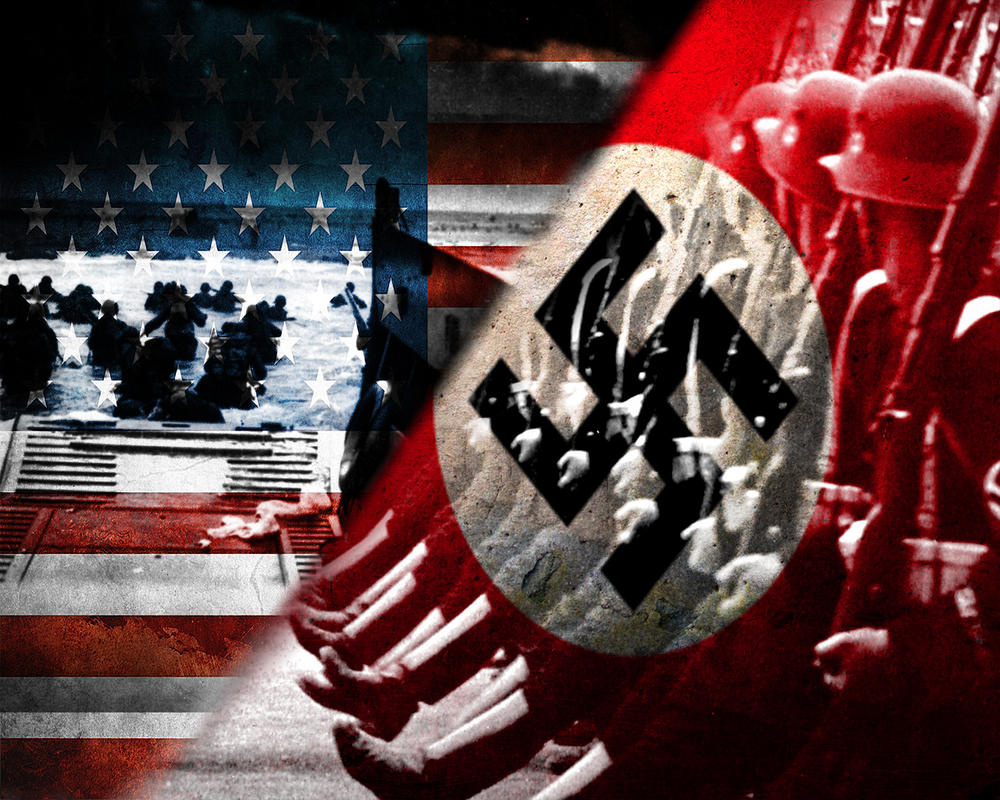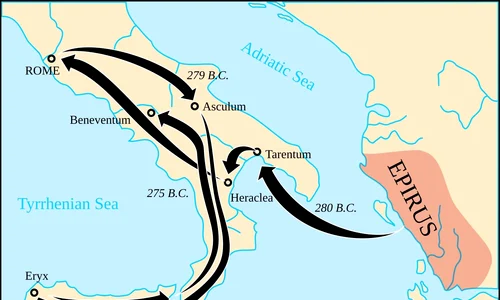
How did Hitler perceive the US?
As wicked as it may seem, Hitler saw the United States of America as a model for the New Germany he was trying to build through his new ideology. The seemingly endless mass of land and natural resources, a great number of people living on the American soil which would use these to their maximum advantage, the security provided by the two oceans, the sphere of influence in Latin America – these are just some of the qualities which Hitler wanted for his state propagandistically entitled the Third Reich.
The German Chancellor wished to transform its landlocked Great Power into an empire with its power base in continental Europe which would later on extended into the Soviet soil. Also, it would make use of the French colonies in Septentrional Africa, in order to transform them into a strategic base so as to get closer geopolitically to the US. In his Second Book, Hitler wrote about preparing its country and people for the ultimate battle with America. The final conflict for world hegemony would be fought between the Deutscher Reich Germanischer Nationas the German Weltmacht was to be known and the United States of America. This last battle would decide who was to rule the world – Berlin or Washington? Would totalitarianism or democracy win? Would the “bandit nations” manage to impose their model on the other countries. And these questions arose in Hitler’s mind, but also, in Roosevelt’s.
Yet, however great the US seemed to Hitler, his opinion of American and Americanism was dual and contradictory. Although the US was the ultimate model of building a state, Hitler thought it wisely to downplay the importance of Washington’s emerging power in the international realm and its power resources. The Chancellor believed in his own axiom that only the German people under his providential leadership could effectively use a territory the size of the one US has, in order to put to good use the amazing mass of resources. The US under the then-leadership of the democrat Franklin Delano Roosevelt who was, in the Chancellor’s opinion, a nuisance[1]was not living up to its fullest potential. Therefore, America was not properly ruled – whatever that meant for the Nazi leader – and he had to build the better model, Germany was to become the alternative model to which every second – class power would adhere to.

Moreover, Hitler thought that the American population was not of the best racial origin a Great Power the size of it should have had. At some point in 1937, Hitler managed to “find” that the US had only 20 million people of Anglo-Saxon origin which was dwindling rapidly, while his empire and his newest additions of 1938 – Austria and Sudetenland-were made up for more than a half of “the best racial stock.” Therefore, in every way he could, the Nazi leader managed and achieved his aim of downplaying the American existing and prospective power. Yet, Gerhard L Weinberg observed that his underestimation of the United States can be seen to have reduced German caution in the 1930's and distorted German military estimates in the 1940's[2]. So, in the end, his erroneous axioms had a boomerang effect against his own country and his war plans.
Hitler also despised everything American, because of yet another murky belief that the US was decadent and the German-Americans and the Nazi-inspired organizations in the American society could breathe new life into it. This twisted view was, of course, in the name of propaganda. The US was to be the last enemy that Germany would ever have to fight and it had to enter the battle at the specific moment in time Hitler would decide. This was, by all means, madness. Yet, this is the reality in which Hitler and the Nazi political elites operated and therefore, it was the one which we should explain to ourselves and not simply dismiss it, because it is not what we are used to or do not consider it a valid way of interpreting the domestic and international realm.
However, it is commonly known that Hitler and the people close to him were watching American movies which were forbidden to the general public for fear of spreading the “decadence”. And, of course, because they would have been exposed to a different type of political regime and its benefits which were not very good compared to Nazi totalitarianism. Hitler, just like any other dictator, would very much cut off the links of the state and society with the outside world in an effort to make the people believe they have achieved perfection and the ultimate truth whereas ideology and political regime are concerned.
Even if Hitler understood in the back of his mind the importance of the American political factor, he did not include it in the 1937 Hossbach Memorandum. Thus, the foreign policy of Europe’s most powerful state in the late 1930s was not planned so as to include the US, but instead it ignored it completely. Germany’s main thrust was in Central and Eastern Europe against the USSR. Nothing was mentioned of Washington which, at the time, was signaling that it would clearly turn in the favour of the UK and France should a war begin. Yet, Hitler dismissed it and ignored its prospective power for as long as he could, simply denouncing the US as a “giant with feet of clay”[3], in order to satisfy the erroneous premises of the Nazi ideology.

Moreover, because of its “inferior” racial origin, the US was unable to form a national army and conduct a war. Even when the troops of the Wehrmacht met with the American soldiers in direct combat in the North African desert, Hitler was still ranting about the military and cultural inferiority of the US:“When Mr. President Roosevelt stutters about culture, then I can only say:what Mr. President Roosevelt calls culture, we call lack of culture. To us, it is a stupid joke. I have already declared a few times that just one of Beethoven’s symphonies contains more culture than all of America has managed to produce up to now!”[4], since he was unable to actually prove the German superiority on the battle field.
Also, in the time of the Second World War, the Chancellor further elaborated on his perception of the US, yet this time, he was more accurate than during the 1930s. In 1940, he declared that “theUS is Germany’ main enemy, because it has the objective of keeping a strong Great Britain” in Europe and in the face of Nazi aggressions, “both would rebuild their empire with their naval power which makes them Germany’s natural enemies.[5]”
In the end, the most important thing is that this twisted, murky and contradictory opinion of the US became the basis of Nazi Germany’s foreign policy. In totalitarian states, the way the supreme leader interprets the reality and makes it an ideology or a doctrine is of the utmost importance, because those ideas translate into the attitudes and actions the state carries into its foreign policy. Thus, the foreign policy of the Third Reich towards the US was not calibrated to match what was actually happening in the bilateral relations of the two states, but the erroneous premises of a twisted world view the supreme leader had.
[1] C. A. MacDonald, The United States, Britain and Appeasement 1936-1939, MacMillan Press, 1981, p.180
[2] Gerhard L Weinberg, „Hitler’s Image of the US”, The American Historical Review, Volume 69, Number 4, July 1964 p. 1021
[3] Gerhard L Weinberg, „Hitler’s Image of the US”, 1020
[4]Max Domarus, op. cit., p. 720
[5] Andreas Hillgruber, Deutsche Großmacht-und Weltpolitik im 19. und 20. Jahrhundert, 2. Auflage, Droste Verlag GmbH, Düsseldorf, Deutschland, 1979, p 208
















